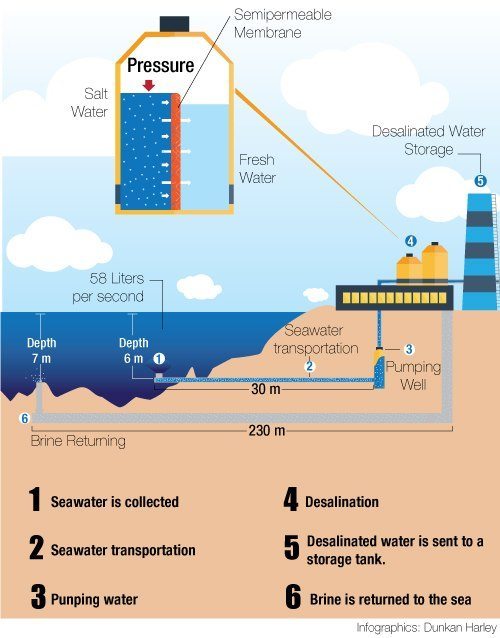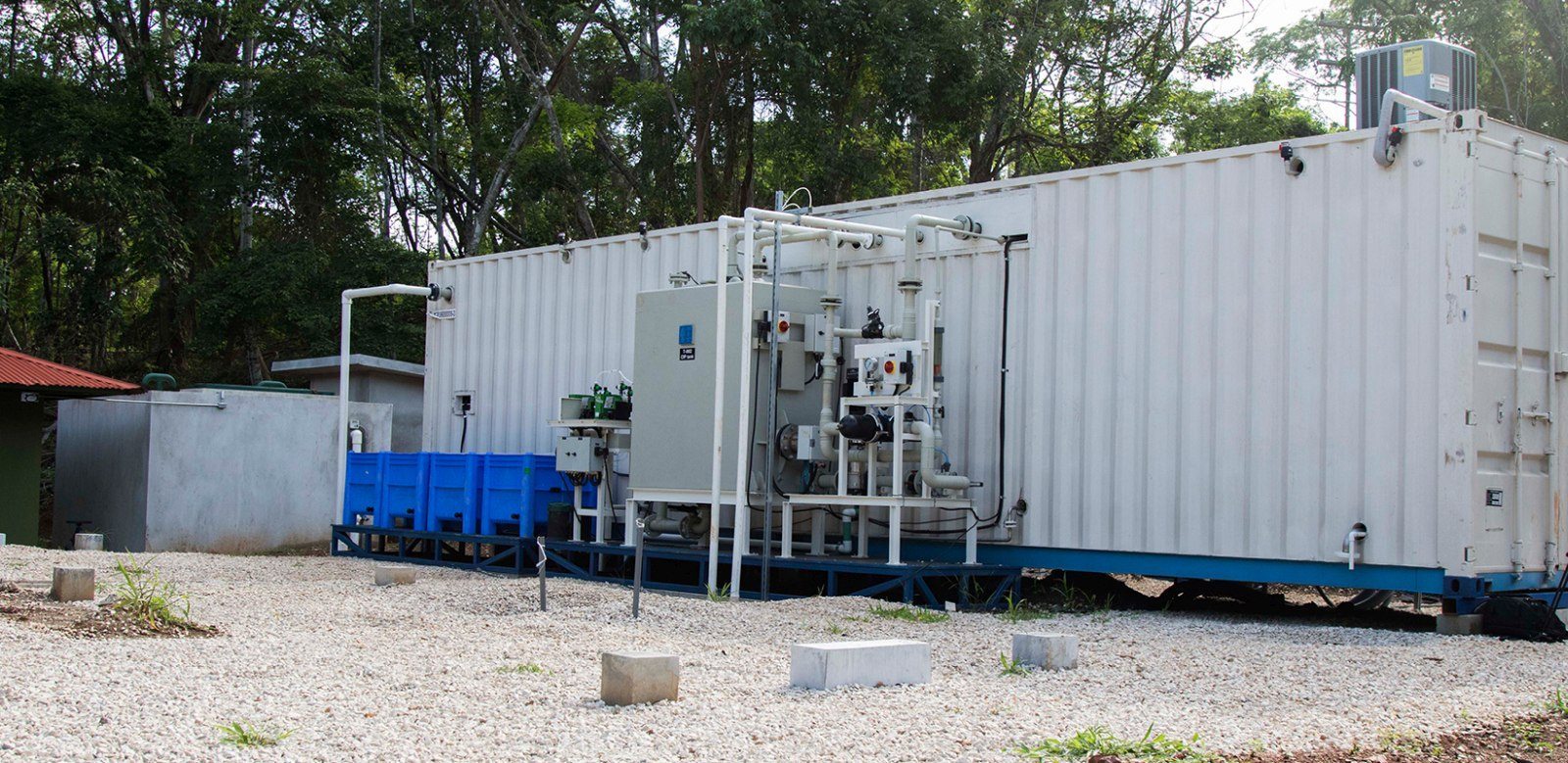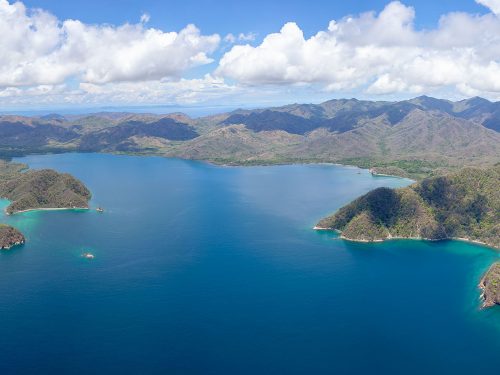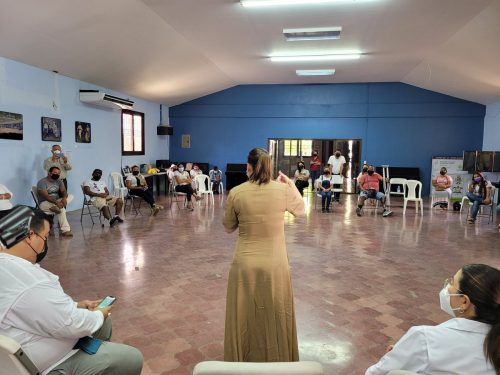
Converting seawater into drinking water is a new reality in Costa Rica that has several business owners excited, interested in securing their future water resource.
On July 22, the Reserva Conchal hotel inaugurated the first seawater desalination plant, with an investment of about $2 million, which has the capacity to produce 23 liters of water per second (LPS). According to Water Management (Dirección de Aguas), one liter of water per second supplies two people.
After this first experience, the vice minister of water for the Ministry of Environment and Energy (MINAE), Fernando Mora, confirmed that the National Environmental Technical Secretary (SETENA- Secretaría Técnica Nacional Ambiental) has already received five environmental viability requests from different companies who want permission to do desalination projects.

Although The Voice tried to find out the names of the companies, as of close of edition, the information had not been received from MINAE.
Mora explained that they can currently authorize installing this equipment to produce potable water for human consumption, irrigation or tourism. However, applicants should file a form with SETENA to conduct an environmental viability study and then request a water flow concession from Water Management.

For now, there is no pre-established limit for extraction. Applicants should specify the quantity of liters that they need and Water Management decides the amount that can be concessioned.
Governmental Aspirations
In addition to business owners, the executive director of the Costa Rican Institute of Aqueducts and Sewers (AyA), Yamileth Astorga, told The Voice of Guanacaste that the institution is working on building a desalination unit in Panama Beach.
The director specified that the only water source for that community is a salinated well that went from generating more than 100 LPS to just 4 LPS, so AyA is supplying residents with tanker trucks.
Although the institution doesn’t yet have technicians who specialize in these plants, Astorga stated that the company takes responsibility for training staff whenever new equipment is purchased.
Will the same system be used to desalinate wells that have seawater present? The director explained that it is extremely expensive to do and that it is very difficult to recover, so she does not consider it feasible.
Waste Going Out to Sea
One of the questions that water desalination plants generate is what happens with the residues from the plant, called brine. Are these residues harmful to marine life?
The National Groundwater, Irrigation and Drainage Service (SENARA- Servicio Nacional de Aguas Subterráneas, Riego y Avenamiento) conducted an analysis of this first plant and determined that the salts returned to the ocean are not harmful since the salts dissolve and come to have the same degree of salinity as the ocean.
In an article published by The Voice of Guanacaste in September of 2015, Cristian Fonseca, marine biologist at the National University’s Marine Station, explained that as long as what is discharged is natural with no additional chemicals, returning it [to the sea] has very little impact.







Comments